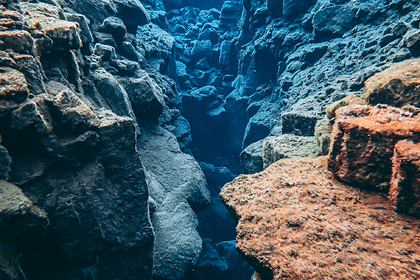MSU scientists have modeled plate tectonics on a young hot Earth 
Earth several billion years ago. It turned out that then these processes were very different from modern ones due to the higher temperature of the upper mantle. The research results are published in Scientific Reports.
It is known that at an early stage of existence, the Earth was hotter than it is now. More than 2.5 billion years ago, the planet had a thinner lithosphere (hard shell), and the high temperature of the mantle contributed to a higher degree of melting of its dominant rocks – peridotites. The melting of peridotites affects such processes as crustal formation and volcanic activity, but little is known about how this could have affected the tectonic processes of the past.
In the new work, the researchers modeled the tectonics of oceanic plates from the Archean (4-2.5 billion years ago) to the present day in a temperature range of 1300 to 1550 degrees Celsius (the difference between ancient and modern temperatures ranges from 0 to 250 degrees). It is believed that subduction in its modern form was absent on the early Earth, when one tectonic plate sinks under another plate. At that time, bilateral subduction was typical, when both contacting plates sank into the mantle.
It turned out that the transition from two-sided to one-sided subduction mode occurs when the temperature of the upper mantle drops below 1550 degrees Celsius. With one-sided subduction, rocks plunging into the mantle melt, thereby creating volcanic arcs, but in the case of two-sided subduction, a different picture is observed. Instead, a wedge up to 180 kilometers deep was formed, which consisted of metabasic rocks containing large amounts of water. Such wedges could become the embryos of modern continents, but this remains to be clarified in future studies.
This entire process led to the emergence of an excessively thickened geochemically depleted (devoid of many chemical components) mantle, which exfoliated from plates and accumulated under the oceanic lithosphere … Later, part of this mantle became part of the cratons – the ancient parts of the modern lithospheric plates. The depleted mantle is still present under the lithosphere, but now its thickness is much less.